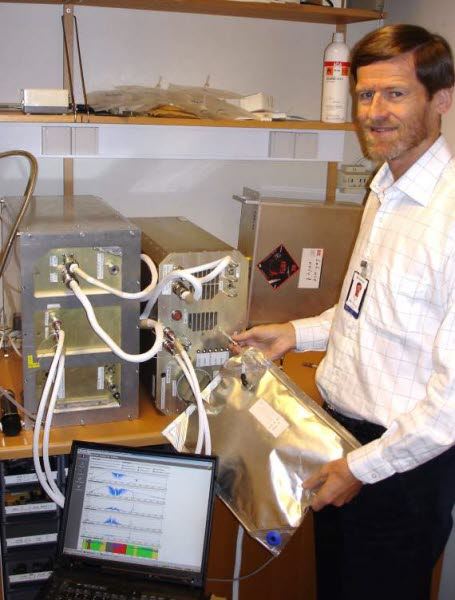
|
|
“Measuring several gases simultaneously is a complicated matter. We are trying to identify both the elephant and the midge, and the elephant may well hide the midge,” says Atle Honne, the “father” of ANITA, shown here with the measurement system at SINTEF, before it was delivered to NASA and lifted to the ISS. Photo: SINTEF |
Just as on Earth, gases evaporate from walls, interior fittings and equipment on board the ISS. The human body also emits gases, while other gases may be due to leaks or overheating.
The mission of ANITA was to demonstrate that that gases can be identified and measured rapidly, giving astronauts the opportunity to put countermeasures into effect in the event of leakages or failures of the air purification sytem.
Also suitable for use down here
ANITA was developed by SINTEF and the German company Kayser-Threde GmbH.
In the course of its year in space, ANITA demonstrated that it could detect gases that other instruments did not sense.
SINTEF’s involvement in the project was due to the fact the measurement technique is also suitable for use on Earth. It can be used in everything from monitoring industrial processes to checking the indoor climate in submarines and similar environments in which such measures are important.
Aiming a long-term deployment
Led by Atle Honne, SINTEF has continued to develop the methods used to interpret its results obtained by ANITA, which allow complex gas mixtures to be measured simultaneously.
The research group is now in the process of developing ANITA 2 with the aim of having the instrument installed permanently in the ISS.
Award
In 2011, Honne received the prestigious “SAE Wright Brothers Medal” for his contribution to ANITA.
Read more:
